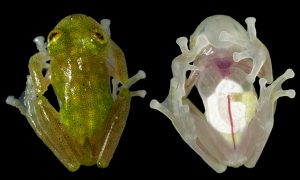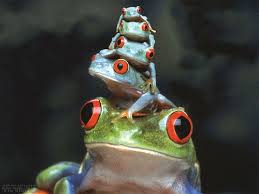Month: October 2016
Sepia officinalis
The next animal that I have chosen to write about is an invertebrate that is pretty smart. It is a species of cuttlefish with the scientific name Sepia officinalis. the more common name for this species is the European cuttlefish because its habitat is the Mediterranean, North, and Baltic seas. The cuttlefish is a cephalopod from the phylum Mollusca. This species has a lot of cephalization meaning that it has many clusters of sensory organs near its head. The cuttlefish has even been documented to have good learning abilities. It is an invertebrate meaning that it has no internal skeletal structure, but since it is aquatic it does not need one as the density of the water is able to provide support for its structure. It moves by jet propulsion but also uses the fins on the sides of its mantle to swim. It has eight long arms and two long tentacles that are used for prey capture and can be retracted completely inside of the body. It also has an internal shell called the cuttlebone that helps it to stay buoyant, because it can fill or empty of gas depending on its needs. It is a predator that eats mainly fish and crustaceans. The primary predators of the cuttlefish are sharks, dolphins, seals, and large fish. The cuttlefish reproduces sexually. There is a lot of fighting over females, and the males use bioluminescence to impress females. When a mate is chosen they line up head to head and the male transfers his sperm into the females mouth, which she then stores in a pouch under her mouth. The female then goes to lay the eggs and can choose which sperm to use if there was more than one male that she mated with. Cuttlefish die soon after reproduction. The most interesting thing about these organisms is their defense mechanisms. Not only can they ink like an octopus to distract and confuse predators, but they can also camouflage themselves at will to evade detection by predators. They are able to camouflage themselves at will due to some cells called chromatophores which are expanded or retracted by muscles to control color. Iridophores and leucophores are also part of the coloring mechanism since they reflect light. They are also able to change their texture using papillae which are muscles that can extend outward from the body or be pulled back in. The effect that this gives is that the cuttlefish can either be smooth or very spiky. Photophores are also present in the camouflage ability and allow the cuttlefish to bioluminescence.
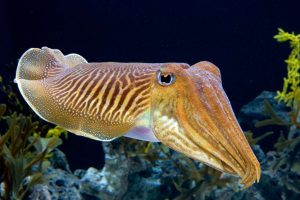
references
Murty, K. R. (n.d.). [Picture of a cuttlefish]. Retrieved October 23, 2016, from http://ilovehomoeopathy.com/sepia-officinalis-2/#.WA0r4pMrJsM
Compton, A. and L. Wiley 2011. “Sepia officinalis” (On-line), Animal Diversity Web. Accessed October 24, 2016 at http://animaldiversity.org/accounts/Sepia_officinalis/
Cyphonia clavata
The next species that I have decided to write about is an insect with a peculiar appendage. The scientific name of the insect is the Cyphonia Clavata. The organism is an insect which also means that it is an invertebrate. Being an invertebrate means that it has no bone structure, but instead has a tough exoskeleton covering to provide structure. This insect is a herbivore. It can use vibrations to send messages to others of its kind on the same host plant. The insect reproduces sexually and the female will inject her eggs into the host plant. The most interesting thing about these insects is there morphology. The insects will actually grow an covering over part of their body that looks like an ant species known to be a tough prey insect. This is a form of camouflage that enables them to use the knowledge that they look like something that is not easily preyed upon to hide from predators. The look of the organism is so that from the top it looks like an ant, but the rest of its body is green and leaf like so that it will blend in with the foliage. The fact that they would use so much energy in producing such an extreme form of camouflage is impressive. This type of growth would be like a human growing another limb on purpose. The fact that this is possible is awe inspiring. That natural selection and evolution would favor such an extreme form of camouflage even with the energy cost is impressive. Scientists do not totally understand how this trait has evolved so that the species can so perfectly grow an imitation of an ant is understandable. Once this is understood however it will most likely help to understand genetic manipulation in such a way that we could mimic this change in other organisms, and maybe one day in humans to produce a new appendage or improve our own appendages. One would think that this kind of evolution would not even be possible, but the fact that it is just speaks to the diversity of our world. If we can think something up then there is probably some form of life that can do it.

References
The ant-mimicking treehopper. (2014, June 29). Retrieved October 17, 2016, from http://www.arkinspace.com/2014/06/the-ant-mimicking-treehopper.html
Davies, E. (2015, November 26). The world’s biggest spider web can span an entire river. Retrieved October 12, 2016, from http://www.bbc.com/earth/story/20151126-the-worlds-biggest-spider-web-can-span-an-entire-river
Deitz, L., & Wallace, M. (2011, August 22). Treehoppers. Retrieved October 17, 2016, from http://treehoppers.insectmuseum.org/public/site/treehoppers/home
La Rue, D. A. (2014, August 8). What is it? an ant-mimicking treehopper: Cyphonia clavata fabricius (membracidae). Retrieved October 17, 2016, from http://crookedbeakworkshop.blogspot.com/2014/08/what-is-it-ant-mimicking-treehopper.html
Than, K. (2010, September 19). Photos: World’s biggest, strongest spider webs found. Retrieved October 12, 2016, from http://news.nationalgeographic.com/news/2010/09/photogalleries/100917-darwins-bark-spider-new-species-spider-webs-madagascar-science-pictures-strongest/
Caerostris darwini
The next species that I have decided to write about is named for the famous naturalist Charles Darwin, who was one of the biologists to describe the theory of evolution. This species is a spider with the scientific name Caerostris darwini. The spider was named for Darwin because it was discovered on the 150th anniversary of when Darwin published On the Origin of Species. The more common name for the species is Darwin’s bark spider. Since it is a spider it is also an invertebrate which means that it does not have a skeleton like ours but a tough exoskeleton. Since it is a spider and a carnivore it also produces venom, but is not fatal to humans. The species has sexual dimorphism which means that the females and males are very different. The females will make webs for their entire lives. The males will stop producing webs once they reach adulthood, even though they made webs as juveniles to focus on reproduction. The females can grow to be about 1in and the males grow to be about 0.25in. The males also have more of a red, black, and white coloring compared to the female black with some white coloring. The spiders are camouflaged to look like bark, and hide on the trees while waiting for insects to fly into their webs. Once an insect gets caught in the web it struggles which moves the silk strands and alerts the spider to the presence of prey. The spider will then go wrap the insect up. It is an orb weaving spider meaning that it produces a web that is circular with lines between, and does not make cobwebs. The spider lives in Madagascar on the rivers there. The interesting thing about these spiders is that even though they have a very minute size, the webs can span entire rivers. One web is known to span a 25m wide river. The spider will send out a large amount of silk that will be carried across the river on the wind and stick to a tree or other anchor, and will then build its web off of that. The large web is extremely taxing in an energy sense. To create that much web costs a lot of energy not to mention building the web as well for such a small spider. The web is able to catch a lot of prey to make up for that failing though, so that there is a lot of source for the energy required for the spider to build a web. The web-building process being energy draining is a cause of concern since the web has to be replaced every couple of days due to tears and loss of consistency and stickiness. The silk that makes this web is about ten times tougher than kevlar. It is able to withstand so much more energy impact before tearing apart or breaking strands. Scientists even hypothesize that the web could potentially catch birds or bats, but no evidence of this has yet been found.
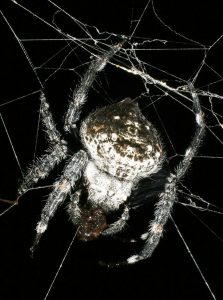
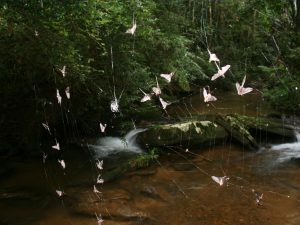
References
Davies, E. (2015, November 26). The world’s biggest spider web can span an entire river. Retrieved October 12, 2016, from http://www.bbc.com/earth/story/20151126-the-worlds-biggest-spider-web-can-span-an-entire-river
Than, K. (2010, September 19). Photos: World’s biggest, strongest spider webs found. Retrieved October 12, 2016, from http://news.nationalgeographic.com/news/2010/09/photogalleries/100917-darwins-bark-spider-new-species-spider-webs-madagascar-science-pictures-strongest/
Hyalinobatrachium taylori
The next animal that I have chosen to write about is an amphibian with the scientific name Hyalinobatrachium taylori. This is a species of frog that lives in South America, and some parts of mexico. They live around rivers in forests. They live at sea level to about 3,800 meters above. They hide in the vegetation around the rivers including trees. These frogs are nocturnal. They are active at night in order to find food and mate. The males have a certain call that they use when searching for a mate that gets louder when they are more dominant. The call is a short high pitched sound. The males will choose a calling site that is preferable for egg laying so that it is close to the water. Males are extremely territorial, and will sometimes physically fight over calling sites. When another male comes close the call will change to a deeper pitch. The defending male will jump onto the back of the approaching male, who will squirm out of the grasp and find another calling spot. When a female comes over to where the male is calling he will jump onto her back and initiate sexual advances. This lasts for a few hours, and the female will deposit about 20 eggs onto the chosen leaf. The leaf that is chosen will generally be over the river so that it can get water to run over the eggs, and so that when they hatch the larvae will fall into the water. It is hypothesized that the larvae will burrow into the bottom of the river and develop there. The males will then guard the eggs for the night. They may return the next and subsequent nights. During the day the frog will sleep hiding near the river in leaves. The frogs also eat during the night, and consume small insects. The frogs are light green with yellow, white, black, or blue spots. Their appearance is the most interesting aspect of these frogs, and also gives them their nickname of the glass frog. Their dorsal or back side that can be seen by looking down at them from their natural position is green and normal looking, but the ventral or underside is a much different story. The underside of these frogs is transparent, so that the internal organs are visible. This is hypothesized to help with camouflage, which is important for these small nocturnal animals that could be tasty meal for the more abundant species that are active during the day. For people who are against dissection, may also like these frogs since they can still be studied internally without harming the frogs, at least to an extent. Sadly these amazing frogs are also endangered. At least some of the species that fall under the family that make up glass frogs. This is due to habitat destruction through processes like deforestation, which leaves the frogs without a place to hide during the day.
References
Kubicki, B. (n.d.). Glass frog care and information. Retrieved October 4, 2016, from http://www.reptilesmagazine.com/Wild-Amphibians/Glass-Frog-Basics/
Nelson, J. K. (2006, June). Glass frog, hyalinobatrachium taylori. Retrieved October 4, 2016, from https://siteslab.byu.edu/Portals/25/images/Field/FrenchGuiana/GlassFrog_HyalinobatrachiumTaylori.JPG
